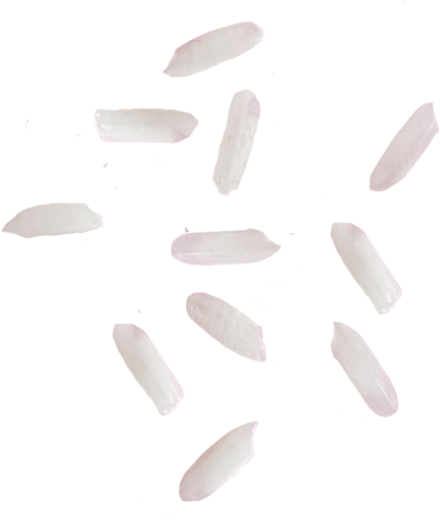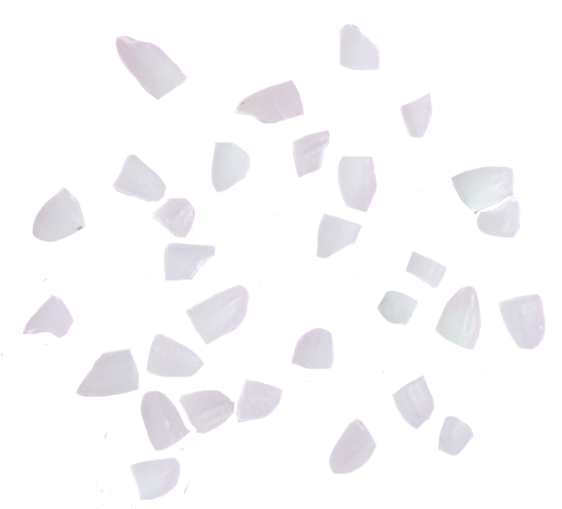Rice Varieties
Basmati Rice
Nicknamed the Queen of Fragrance, this rice is known worldwide for its unique, nutty flavour. It’s long, slender grain gives it added nutritional content, and contains about 12 times the aromatic compound as non-basmati rice varieties do, giving it its aromatic distinctiveness. It is a flavouring agent approved in the United States and Europe, and is commonly used in bakery products. Basmati rice doubles twice in length when cooked, lending to its costlier price. It is mainly exported to United States, Europe, UK, Saudi Arabia, Iran, United Arab Emirates, Iraq and Kuwait.Our Basmati Rice’s are:
PUSA 1121

Developed by the Indian Agricultural Research Institute (IARI) and released for commercial cultivation in 2003, Pusa 1121 is derived through a process of hybridization. 1121 Basmati Rice is consumed mostly within India, but is also exported to different countries around the world.
BASMATI 386

The variety known as Basmati 386 is a crop that is 180 cm tall, photosensitive and performs best under medium fertility conditions. Basmati 386 rice is widely appreciated for its extra-long, superfine grain. Its non-sticky and soft to eat, in addition to its nutty flavour and aroma.
LOW GI Basmati Rice

This rice is a particularly good choice for people with diabetes, as it is low on the Glycaemic Index. This is due to a 3-pronged process of soaking rice while still in husks, steaming, and then drying the rice, resulting in a partially cooked, less sticky basmati that holds its firmness much the same way brown rice does. In fact, Parboiled rice holds close to 80% the nutritional value found in most brown rice, making Parboiled Basmati a healthier basmati rice enjoyed by health-conscious rice lovers throughout the world.
Non-Basmati Rice
There are over 10,000 varieties of rice in the world today, 90% of which come from India and other parts of Asia. Non- basmati rice is known for its superb taste and full grains just the same as Basmati rice, only takes less time to cook. Our Non-Basmati rice includes:
PONNI RICE

A medium-grain rice that expands lengthwise when cooked. It is widely cultivated in Andhra Pradesh, Karnataka, Tamil Nadu and Uttar Pradesh in India. The name Ponni literally means 'like gold” and consumers love its golden aesthetic, its tasty richness, and fine aroma.
SONA MASURI RICE

SonaMasuri rice (also known as SonaMansoori or Masoori) is an Indian white rice mostly grown in the Andhra Pradesh, Karnataka and Uttar Pradesh regions of India. It is a medium-grain, lightweight, low in starch variety with a long shelf life.
SAMBA MASURI RICE

Samba Masuri is another rice that has been identified as an ideal variety for the diabetic rice connoisseur. This mild starch strain is easy to cook and preserves long after. Its non-sticky formula is one of the most favoured in India due to its high nutritional value, long grain, rich aroma, great flavour and diabetic-friendly nature. This range of rice is offered in different packaging options, all affordably priced.
WHITE MOTA RICE

This white rice has a lower moisture level, creating a sleek, slender, and polished finish. When cooked, it becomes fluffy and solid in texture, making it ideal for those who prefer hard-cooking rice.
BROWN RICE

This whole grain rice’s outer hull is removed, giving it its rich, brown colour. It has a mild, nutty flavour, and holds a higher nutritional value than most white rice due to its still-intact bran layer. It’s highly enriched with vitamin B, Iron and Magnesium, making it good for the heart and easy to digest.
BROKEN RICE

Mechanical separators are used to separate broken grains from whole grains during milling, a process that produces around 50% whole rice, 16% broken rice, 20% husk, and 14% bran and meal. As broken rice generally still maintains its energy content similar to intact rice, it is commonly used in making flour and rice noodles.
